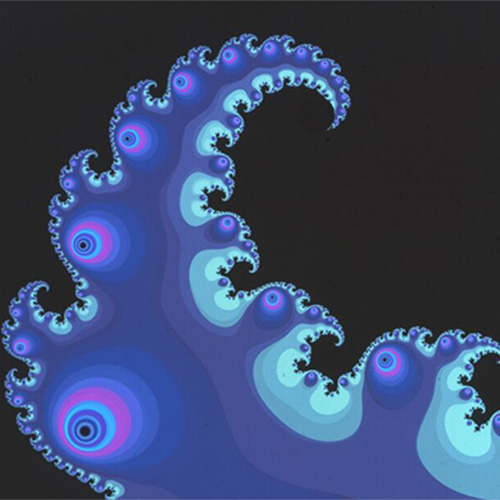



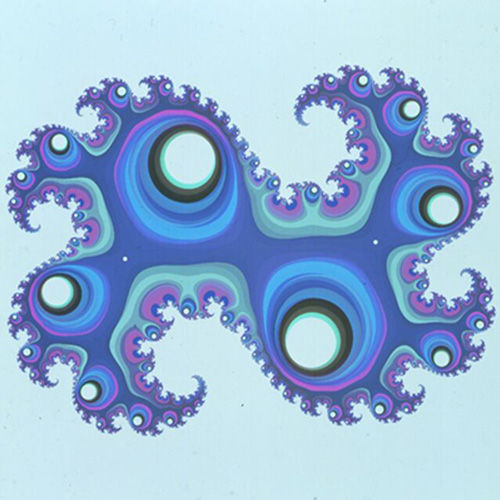

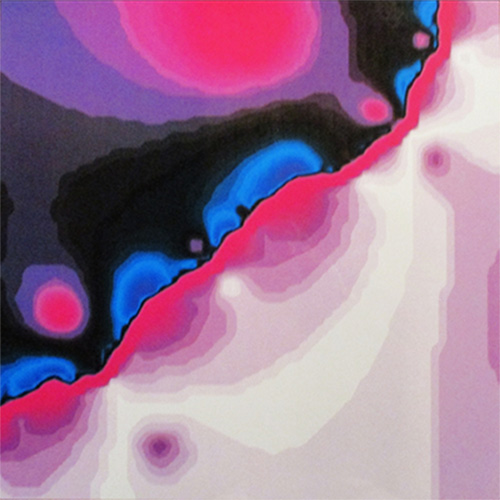

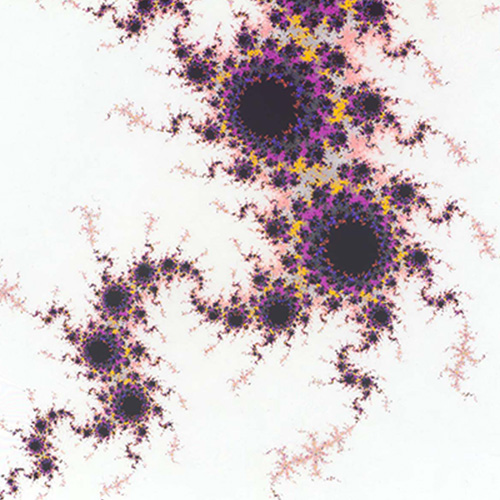

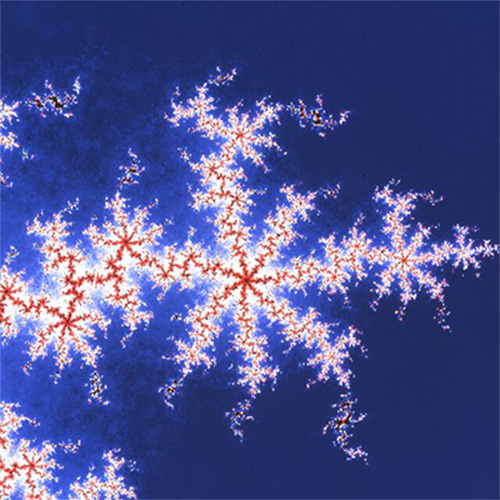

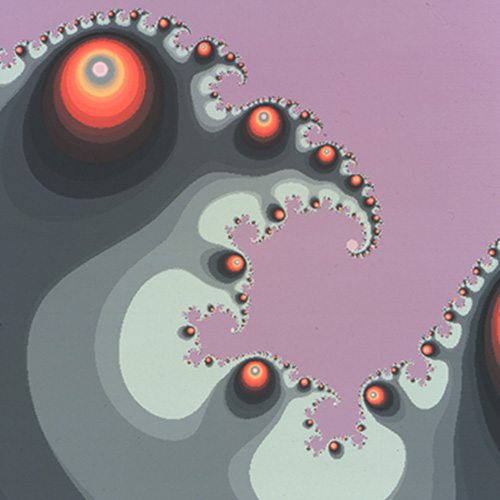



Fractals Series (1980-1990)
The Fractals series, whose mathematical theory was developed by Benoit Mandelbrot, was created in the 1970s. Their mathematical peculiarity are broken dimensions. For many, this initially seemed like aloof mathematics, the meaningfulness of which being obscure even to many mathematicians. Since then, fractal structures are considered central to the theoretical description of processes and structures in nature.


From coastlines to plant growth to weather patterns: nowadays physicists everywhere use the mathematical world of fractals to describe such phenomena precisely. Even before the establishment of the fractal theory, however, mathematically describable principles of order were already known, which today belong to the fractals: for example the Fibonacci number series, with which, among many other things, the growth process of certain types of spherical cacti can also be described. A topic with which the cactus researcher Franke also dealt with elsewhere.
The Math Art project was about opening up the aesthetic dimension of these strange, nested structures.
The term Math Art summarizes the results of a long series of experiments that Herbert W. Franke carried out together with the physicist and programmer Horst Helbig from 1980 onwards. It was about the use of mathematical methods, which were not developed and used for scientific purposes, but for aesthetic purposes. The main goal of the 15-year project (1980-1995) was the investigation of numerous mathematical disciplines regarding their aesthetic dimension and the visualization of complex mathematical relationships from algebraic formulas to stochastic relationships. In the course of the work, not only was the aesthetic dimension of formulas and functions explored, but a whole series of new graphic routines were also created, which were integrated into the software DIBIAS (for digital image evaluation system) as a fixed component, including representations in 2D and 3D as well as further processing with the methods of image transformation (picture processing). The heart of the computer was a Comtal Image Processing System and the software DIBIAS (digital image evaluation system) with a resolution of up to 2048 x 2048 pixels and around 16 million colors.
Algebra Series
Letters Series
Stage Set Series
Fields Series
Fourier-Transformations Series
Complex Numbers Series
Logic Series
Picture Processing Series
Random Series Serie Fraktale
